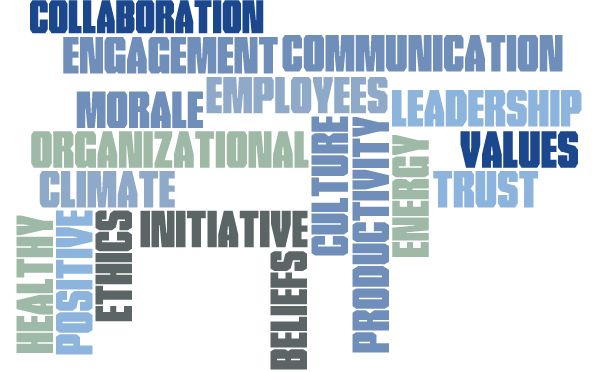A healthy organizational culture and climate is critical for success and longevity.
With logistical and shipping issues, fluctuating budgets, the aftermath of a pandemic, and politicized workplaces, organizations scramble for solutions amidst ever-evolving challenges.
When employees leave for other positions, offering healthier environments and work-life balance, managers struggle to keep people.
Organizations that fall short try to get employee’s attention by presenting their new plan.
They might as well issue each employee a bingo card before meetings to log the use of buzzwords and phrases like “create actionable synergy”, “think outside the box”, “circle back” to consider new “paradigm shifts”, and then “run it up the flagpole.”
Leaders might think trendy leadership jargon is a magic fix for engagement and success.
It’s NOT
Reality: Today’s workforce has seen and heard enough buzzwords without payoff. Leave the bingo card at home. Buzzwords lose the audience. Employees don’t want unhelpful jargon; they prefer useful language that describes productive ways to support both them and the organization.
The Solution: Create an organization where two factors matter: Culture and Climate, a place where each person reflects them and exists throughout the workplace.
Aren’t these just a couple more buzzwords?
No
Understanding the distinct roles of organizational culture and climate can expand your organization’s potential. They are both fundamental building blocks that help create a thriving organization. If you are unsure of the difference between culture and climate, that’s okay. This article will make it clearer for you.
Understanding Organizational Culture and Climate
Culture

For a moment, think of a person you know well. Now, think about their values, beliefs and work ethic. What makes them the person they are?
Now, think of your organization. Whether it is a small team of people or a large workforce. Organizations consist of people with their own personal values, beliefs, and work practices. Just like people collectively show the individual personality, they reflect the workforce personality, or organizational culture.
Climate

Looking closer at the workforce, the social interaction with co-workers and mood defines the organizational climate. For instance,
➡️ During any workday, how does your workforce get along?
➡️ Are they happy and energetic, or discouraged and fatigued?
➡️ Do they work collaboratively as a team, or in an environment of competition?
Another Way to Consider Culture and Climate
When viewing organizational culture, we considered ingrained values, beliefs, and their internal work ethic.
Basically, it’s their nature, or DNA, that creates their personality. Whereas the organizational climate is the weather, or emotional temperature, of the workforce. Are there sunny days at work, or stormy interactions?
The Culture Sets the Foundation for the Climate
To put the two into perspective, consider an organizational climate where people value and believe in open communication.
That foundation supports an organizational climate where people feel comfortable sharing ideas and concerns. Conversely, a culture of blame can create a climate of fear and silence.
The Significance of Culture and Climate for Organizations
Understanding the differences between culture and climate is important to create a healthy and prosperous workplace. A positive culture, characterized by values of trust, respect, and collaboration, sets the foundation for a positive climate.
When a healthy climate exists, it results in happier, engaged, innovative and productive employees. When organizations identify and address negative issues in either culture or climate, they can pursue healthier work environment improvements. Each enhances employee morale and productivity.
Culture and climate are dynamic entities within the organization. Leadership actions, employee experiences, and external factors influence both culture and climate.
Last Thoughts
The power of organizational successes lies within the culture and climate. Just like the weather, it’s never truly static. But unlike the weather, you have the power to influence it.
By understanding the current culture and climate, and addressing underlying challenges, you can create happier, more engaged employees, boosted productivity, and a revitalized organization humming with positive energy.
Ready to peel back the layers and discover the true pulse of your organization? I’m here to help. With a customized organizational culture and climate assessment, we can discover the strengths, weaknesses, and hidden opportunities within your organization.
Then, craft a plan to create a climate of engagement, empower your employees, and propel your organization to new levels.
Don’t let your organization’s potential remain veiled in mystery. Take the first step towards a thriving workplace today.
Reach out to me today and let’s embark on this journey together. Reach out to me today and let’s embark on this journey together.
A positive climate doesn’t just happen–it’s cultivated, one meaningful step at a time.
About the Author

Anthony M. Davis is a Certified Leadership, Success and Stress Coach. He is a clinically trained Board Certified Hypnotherapist.
He has earned a national reputation for his Transformative Life Centeringwork with clients from across the nation. His unique approach helps clients remove underlying fears and triggers, and then, through coaching, helps them pursue and accomplish life and career goals.
He provides Coaching and Hypnotherapy sessions remotely through Zoom. If you have challenges and are ready to move past them, Contact him Here to create the life change you desire.


